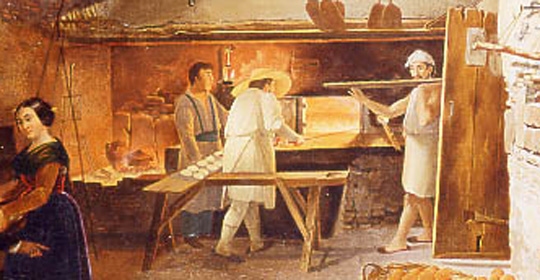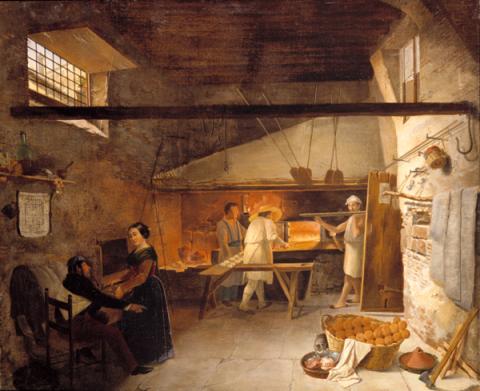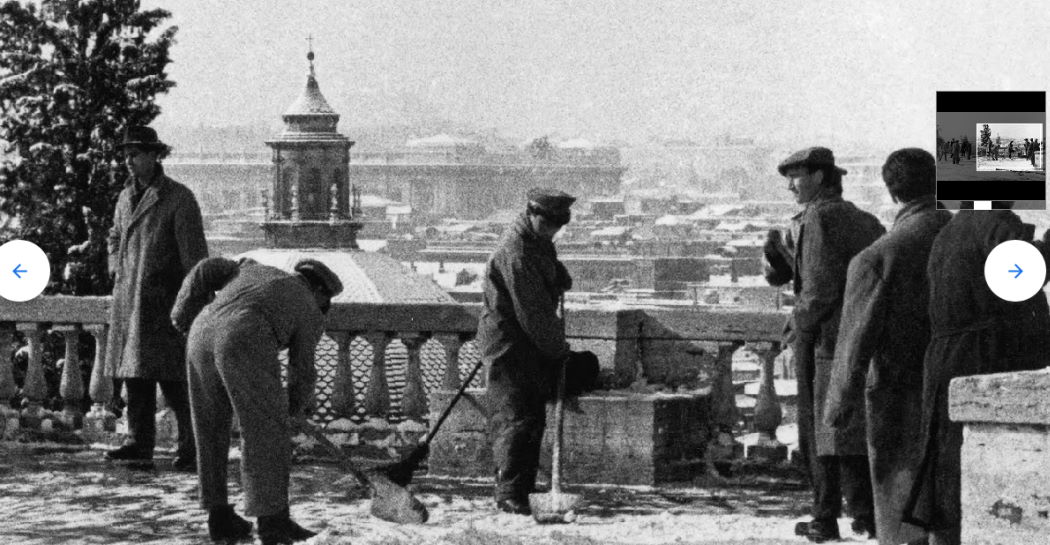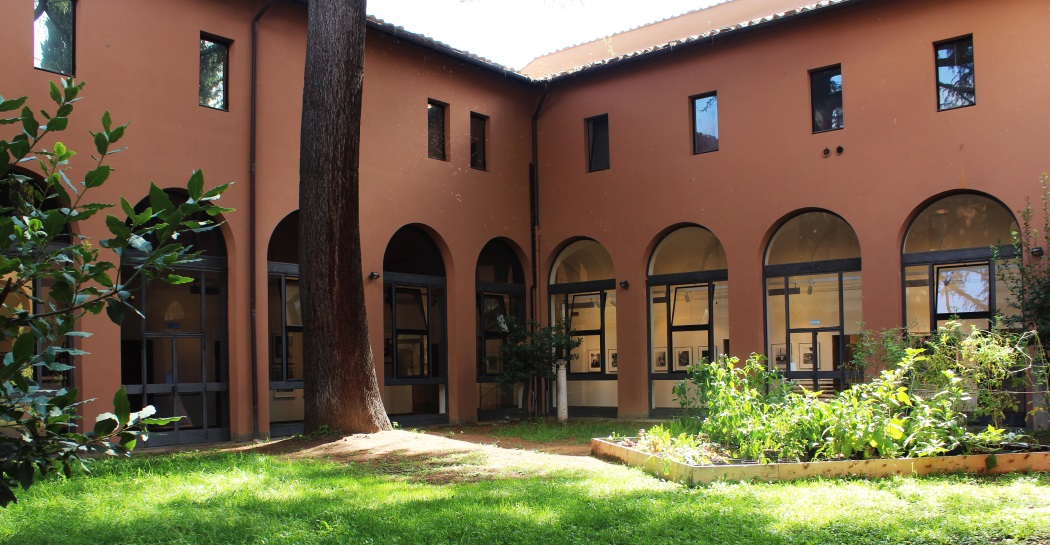The bakery
In the mid-nineteenth century Roman bakers baked and sold various qualities of bread. The "fornai da stufa" or "venali" (stove bakers) baked white bread in rolls (in rows of twelve, arranged in pairs) and high quality loaves made “from only the first and finest flour” and sold at a high price; from these bakers "casareccianti" or "casarecci" bought, at a lower price, loaves of the second or third quality.

There was also variation in price according to quality among the “fornai di stufa”. Most of the bread was anyway bought by retailers, the "orzaroli". The method of bread making and the quality of the products were mainly conditioned by consumer demand rather than by governmental regulation.
Until a few decades ago the "casareccianti" were called "baioccanti" because they sold "pane a bajocco" (the bajocco was a small coin in the papal state, so “pane a bajocco” is roughly “half-penny bread”): the loaves were heavier or lighter depending on the variations in the price of grain imposed by the Vatican, but they always cost a bajocco.
Baking took place at night: the kneader kneaded the flour in a trough, then divided the dough into loaves and oversaw the fermentation process began; the weigher then weighed the dough and cut it according to the weight of bread desired after baking, the baker regulated the heat of the oven and oversaw the cooking.
Some bakers, both "venali" and "casarecci", also sold grain and dough. All the shops had to remain open until three in the morning. It was very unusual to bake bread at home, except in aristocratic families and among those charitable institutions which provided bread for the poor.
Bread, as the main element of the popular diet, was traditionally subject to prescriptions and restrictions as part of everyday behaviour. The loaves should never be put upside down on the table (“It makes the Madonna cry”, warned Giggi Zanazzo) and if a piece of bread fell on the ground, it had to be picked up, kissed, and if it was too dirty to eat, thrown on the fire.







































